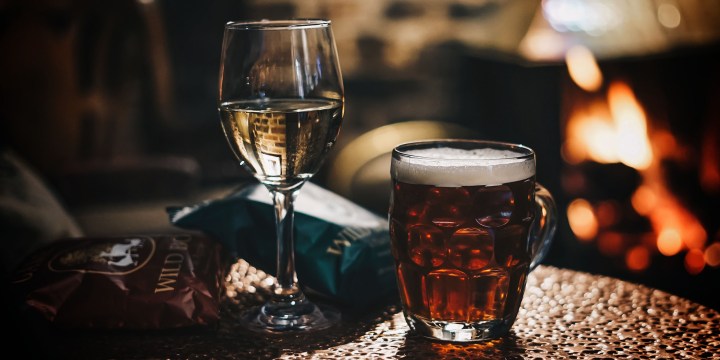HOPS VS GRAPES
A battle brewing over the taxes paid by the wine and the beer industry

The beer industry has called for a level playing field when it comes to the “sin taxes” imposed on alcohol, but is this justified and how much of it is simply a campaign to revive interest in beer over wine and ciders?
Patricia Pillay, chief executive of the Beer Association of South Africa (Basa), says it would be “more fair” if the government taxed all alcohol including beer and wine according to alcohol by volume. Currently, beer is apparently taxed R3.54 more than wine with the same alcohol volume.
Pillay says the beer industry is further disadvantaged in that excise taxes are due four months before consumption compared with the wine industry, where excise taxes are due about 36 months prior to consumption.
Excise duty or sin tax is administered by the South African Revenue Service (SARS), paid by the manufacturer up front and ultimately borne by you, the consumer, when it is tagged on to the end price of your beer or bottle of wine.
Rico Basson, the managing director of Vinpro, which represents almost 2,600 wine producers and industry stakeholders, says taking into account the various differences between the beer and wine manufacturing value chains, such as stockholding periods, sales and cash flow cycles, and shelf life, SARS has always strived to ensure that the playing fields are level, and that excise duty payment terms are not structured to benefit one industry over another.
Over the years, the National Treasury has carried out detailed analyses when calculating and finalising the excise tax structure.
“In South Africa, the excise burden borne by the wine industry is much larger than other wine-producing countries and on average higher than emerging economies and developed markets,” says Basson.
In 2021, looking at wine and brandy (brandy is produced by distilling wine), the government earned R7.3-billion from excise and VAT, compared with producers’ gross income of R6.6-billion.
Basson says the wine industry is generally well understood by regulators such as SARS, and Vinpro supports an alcohol policy review process based on factual insights and a good understanding of the various alcohol category value chains from soil to sip.
Comparing apples with apples
Referring to a recently released Oxford Economics report, South African Breweries’ chief executive Richard Rivett-Carnac says this is the first time in more than a decade that there has been such a comprehensive investigation into the SA beer economy.
However, the Oxford Economics report, which was commissioned by the South African beer industry, relies solely on data from 2019, because they are “more representative, excluding Covid distortions”. Though the Oxford Economics report claims that the SA beer industry supports about 248,000 jobs, it’s worth noting that these statistics drastically changed two years ago when the industry shed as many as 165,000 jobs (according to Basa).
If we’re comparing apples with apples, or in this case, hops with grapes, we have to go back to the wine industry’s 2019 statistics, which reveal that SA’s wine industry supported 269,096 jobs, compared with the beer industry’s 248,000 jobs in the same period.
A 2019 study of the macroeconomic impact of the wine industry further shows that the South African wine industry contributed R55-billion, or 1.1% of the country’s GDP. Of this, R19-million included salaries paid by the wine industry and its suppliers, and R7.7-billion was government tax income made up of VAT and excise taxes paid by wine manufacturers directly, a small amount by wine grape farmers and the rest paid by the industry’s suppliers. The Oxford Economics report on SA’s beer industry reflects a R71-billion or 1.3% contribution to South Africa’s GDP in the same period.
Visit Daily Maverick’s home page for more news, analysis and investigations
So, now that the 2019 statistics have painted the playing field pre-Covid, let’s look at what happened after Covid. NielsenIQ South Africa’s managing director Ged Nooy says in the six months to the end of July 2022, beer sales saw the highest growth in rand value, but lagged behind flavoured alcoholic beverages such as ciders and premixes, and wine when it came to the number of units sold.
NielsenIQ statistics show that wine has seen strong growth of 32.4% in volume in the latest six months, although beer remains the largest liquor category, commanding 45.4% of value sales in the past six months. Nooy points out that the four liquor bans in 2020 and 2021 led to a trend towards the purchase of longer-lasting bottles of spirits, which has continued as SA’s “new liquor palate” becomes entrenched.
The Distell integrated annual report for 2021 notes that beer was the most exposed category during lockdown, losing 7.1% volume globally in 2020. “This will increase the competitive landscape for Distell, as ciders, flavoured alcoholic beverages and wine continue to compete against lower-cost beer.”
However, drinks market analysis group IWSR projects that ready-to-drink volumes will increase by 26.6% in 2021, with a 10.2% compound annual growth rate to 2025, driven by the trend for convenience, refreshment and flavour. DM168
This story first appeared in our weekly Daily Maverick 168 newspaper, which is available countrywide for R25.



















 Become an Insider
Become an Insider
Comments - Please login in order to comment.